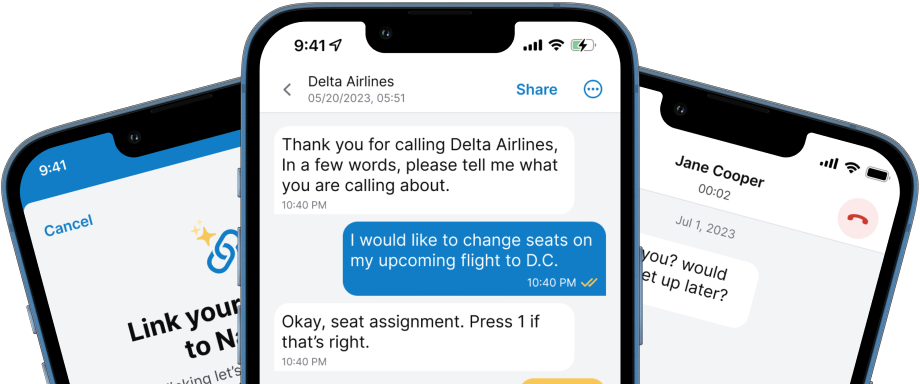Language Deprivation in Deaf Children
We take an in-depth look at the non-trivial path parents must navigate to help their deaf children when it comes to language and how its deprivation can cause children to fall behind.
.webp)
While we know that language access is a fundamental human right, the reality is more sobering. Research shows 70% of Deaf, DeafBlind, DeafDisabled, and Hard of Hearing children don't have sufficient language access. The statistics are even worse among Black, Indigenous, and Persons of Color (BIPOC) deaf children. Language deprivation is real and dire. In fact, 98% of deaf children have no access to education in sign language.

Many factors contribute to language deprivation for young deaf children. Yet there are ways to overcome those factors and support successful language acquisition for deaf children. We will detail the contributing factors and ways to overcome them below.
What is Language Deprivation?
Language deprivation is defined as the chronic lack of full access to a natural language during a child's critical period of language acquisition. Research has shown that if deaf and hard of hearing children do not have full language access, they may experience language deprivation. This excludes a fully accessible visual language such as American Sign Language (ASL).
Dr. Wyatte Hall, an assistant professor of Public Health Sciences at the University of Rochester Medical Center, estimates that less than 10% of all deaf children in America are getting early access to language. He explains that after the critical period, it is complicated to go back and fill in the gaps in their language functioning skills. Imagine a deaf child entering school at the age of 5 having only 50-100 words when, at that age, they should be able to have thousands of words in the vocabulary base. This is what language deprivation looks like.
Language deprivation can cause cognitive delays. Amplification devices don’t always work the way they are expected to, nor do they work in all environments, which is why many push for sign language after birth. Science has proven that sign language after birth does not harm the development of language output.
Consequences of Language Deprivation
Mental health clinicians often see language deprivation and language dysfluency as common "symptoms" in deaf individuals who seek treatment. As a result of language deprivation, deaf children can:
- Suffer from cognitive delays
- Have a hard time in school- affecting reading, writing, and communication skills
- Have more difficulty developing a sense of self
- Experience disconnection with one’s cultural roots and identity (deaf heritage)
- Experience difficulty in forming connections and relationships with deaf and hearing peers
- Struggle with planning and time management

Deaf children who suffer from language deprivation experience difficulties with abstract thinking, cannot arrange narratives in a linear sequence, and have trouble with constructs like cause and effect.
Medical Belief Fallacy Regarding Language
There is a long-standing belief that sign language interferes with spoken language development in deaf children. However, Dr. Hall noted that research has shown that the brain does not prefer spoken or signed languages as long as the deaf child is exposed to a language with a strong foundation. ASL does NOT interfere with other forms of learning.
According to the National Association of the Deaf (NAD), the misguidance from medical professionals often convinces parents and families of deaf children that they must select only one form of language to ensure efficient language development and communication. However, evidence has shown that many people worldwide thrive educationally and intellectually when they are educated in or exposed to two or more languages from birth. Due to this erroneous information from their doctors, parents, and families often select a spoken language to teach their children. The decision of families to only use spoken language with deaf children too often results in language deprivation for these children. The NAD believes that for most families who have just learned that their child is deaf, there is little discussion of visual language, language acquisition, or the long-term impacts of language deprivation. Instead, the debate focuses on normalizing the deaf child by forcing language through sound.
We also know that research shows bilinguals are associated with better cognitive outcomes when compared with monolinguals. A study of cochlear implanted children – who sign from birth – suggests that they can demonstrate comparable scores on standardized language testing (including speech skills) to their hearing peers, often beating those who are implanted and did not sign from birth.
An issue in nearly all early intervention scenarios is that medical providers who serve families with deaf or hard of hearing children often are not trained in these children's unique language acquisition needs and do not have knowledge about deaf culture and resources available for families that support identity development. That needs to change as these medical providers have an implicit bias toward speaking norms, leading them to share information heavily skewed toward auditory access, listening, and spoken language. This is not their fault. It is how they are trained, but we can change their training by making the curriculum more inclusive.
Language Acquisition
When it comes to language exposure, there is a ticking clock. The brain is biologically ready to acquire language during a critical period between birth and 3-5 years of age. There is a high degree of brain plasticity during the critical period of language acquisition (approximately the first five years of life development). The brain forms 700 new neural connections from age 0 to 5 every second. Learning a language later in life makes reaching total fluency in one language harder.
Research has shown that facilitating deaf children's acquisition of a signed language enables their access to total linguistic input, promoting written and spoken language development. Again, exposure to language from birth is essential for developing cognitive skills, according to various studies. Interestingly, babies learn sign language much quicker than spoken language.
What Factors Lead to Successful Language Acquisition?
Early exposure to language is the number one factor that leads to successful language acquisition. Other factors for successful language acquisition include:
- Monitoring language milestones: Ensure the deaf child meets expected language milestones in a timely, age-appropriate manner.
- Providing and implementing support: Provide evidence-based language and communication support.
- Providing an language-rich environment: Allow the deaf child to interact with the world around them daily without barriers. Provide ASL language support as needed.
- Information access for families: Share information about language acquisition, communication opportunities, and resources about deaf culture in their primary language.
- Building a connection to the deaf community: Introduce the family to deaf people, including those from diverse backgrounds, immediately after identifying that a child is deaf after birth.
- Providing education prior to discharge: Provide balanced information and resources about language acquisition before discharge from the hospital or upon referral if screened outside of the hospital.
To combat language deprivation, 21 states have passed laws to monitor deaf children's language development milestones. It would tremendously help to boost this figure to all 50 states.
Closing Thoughts
We believe that every Deaf, DeafBlind, DeafDisabled, and Hard of Hearing child has the right to access a full language from birth. Full language access is critical for all children. Every child must be exposed to all forms of language to ensure full access. There is no reason to deprive a child of any access.
What we need to remember is that language deprivation is preventable! Your child can have it all and benefit! It is essential to give your child everything to ensure there is no language deprivation.





